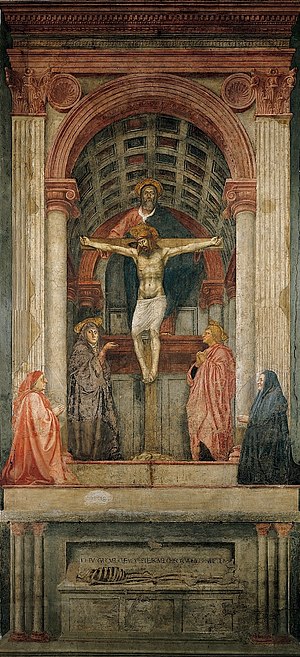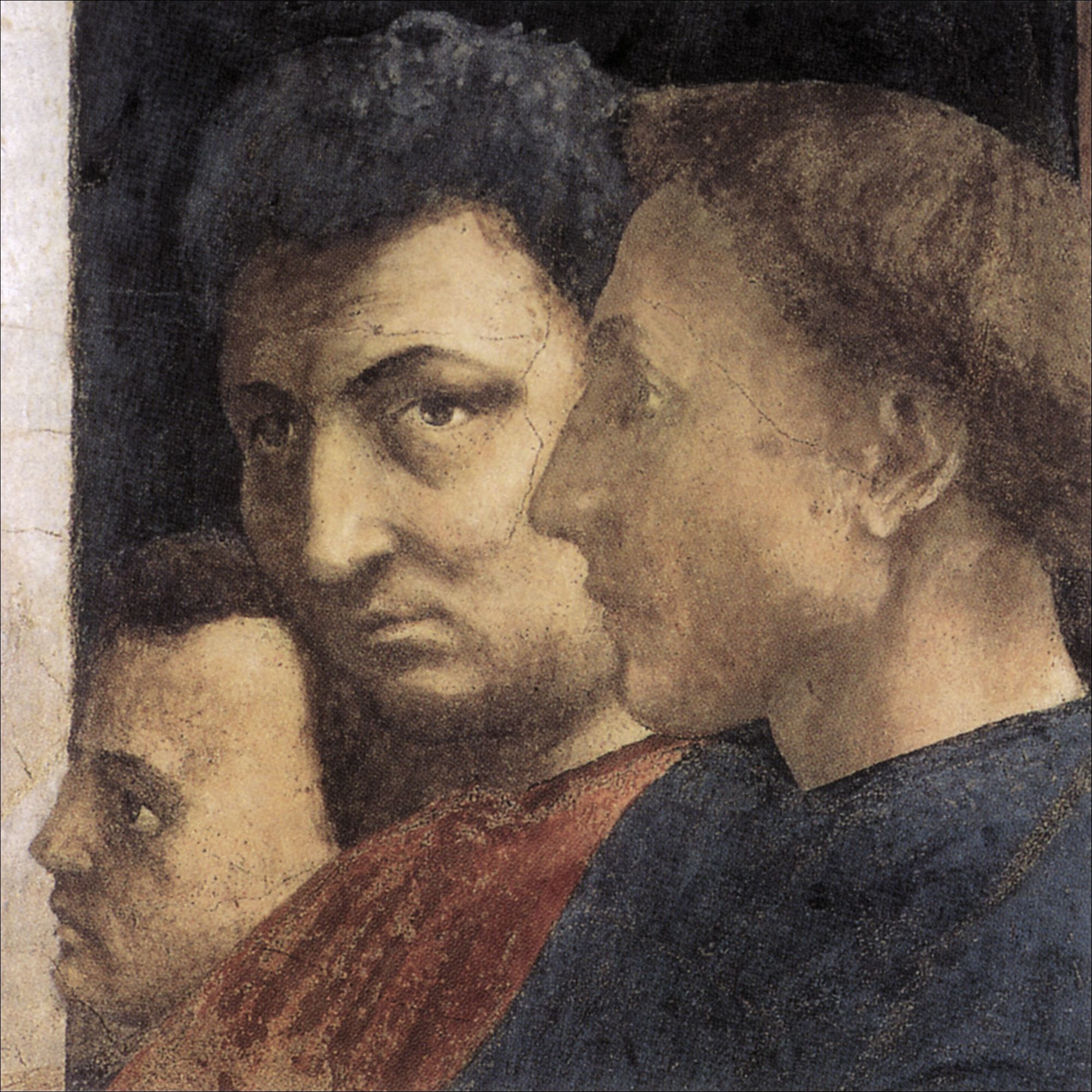Biography
Masaccio is an Italian painter of the Florentine school. He is considered as one of the founders of the Renaissance. He contributed through his art to the transition from Gothic to new art, which glorified the greatness of humanity and his world.
Masaccio was born in the provincial Tuscan town of Castel San Giovanni on December 21, 1401. His full name is Tommaso di Jiovanni di Simone Kassai. Nowadays, we know next to nothing about the childhood and youth of the artist. He died at an early age, so just a few biographical facts about him has survived. Masaccio earned his nickname because of his inattention and indifference to everything except art. (Masaccio can be translated from Italian as ‘the one, who does not hit the target’). He was obsessed only with his work. It is believed that the teacher of Masaccio was Florentine Masolino da Panicale. A great influence on the young man had the artworks of Giotto di Bondone and contacts with famous contemporaries: the sculptor Donatello and the architect Brunelleschi. Brunelleschi assisted Masaccio with questions about the prospect of painting. In 1422, Masaccio entered the Florentine Guild of Physicians and Pharmacists (which also included artists). Not being particularly popular in life, the artist, after his premature death at the age of 26, became a role model for many followers, including Renaissance titans like Raphael and Michelangelo. The cause of his death remained a mystery, like his father’s, who died, being only a year older.
Key Ideas in paintings
Studying with other major masters of the Renaissance as Donatello and Brunelleschi, Masaccio took the best of the styles of these artists and sculptors, added his own vision of the world and created his own recognizable style. You can feel a clear definition in his drawings. He was realistic, and accurately reproduced the appearance of people, nature, and architecture and is a bright representative of the Splinter Renaissance. For comparison, you need to know that a romantic, distorted ‘Gothic’ style of the image was in fashion at that times.
Famous paintings made by Masaccio
During his short life, Masaccio created many paintings and frescoes, mostly intended for churches. His masterpieces such as the ‘Triptych of St. Juvenal’, ‘The Madonna and Child with Saint Anne’, the Pisa triptych, ‘Prayer for the Cup’, the frescoes of the Brancacci Chapel and the ‘Sagra’, or the ‘Lighting’ that has not reached our days are widely known. In addition to church painting, there are examples of civil works, masterfully executed by Masaccio — portraits.
Madonna
‘Madonna and Child with Saints’ refer to the early period of his work. This masterpiece is from the small church of San Giovanni in Casa di Reggello. Probably, in the years 1422-1424, Masaccio and his fellow countryman, Masolino de Panicale, worked on another altar composition — ‘Madonna with Child and Saint Anne’ (Florence, Uffizi Gallery).
Holy Trinity
The rupture of the artist with the previous artistic tradition was fully revealed while he was working on the fresco ‘Holy Trinity’ (Florence, the church of Santa Maria Novella), created, apparently, in around 1427. The plot of the composition is completely traditional: it depicts God the Father, crucified Jesus and the Holy Spirit in the form of a dove. However, Masaccio illustrated this topic unusually. Instead of depicting saints on a golden background, which emphasize the timeless aspect, he placed the image of the Trinity in a small chapel. Also, the viewer’s sight goes up from the bottom. The illusive image of architecture created here is the first example of a successful and coherent use of the recently opened principle of linear perspective with a single point of ascension in drawings. The researchers interpret this fresco in different ways, but its main theme is the victory of faith over death.
Brancacci Chapel
Frescos of the Brancacci chapel at the Church of Santa Maria del Carmine in Florence are the most prominent works of art in Masaccio. He created them together with Masolino. Probably, he was the first one who was supposed to do them in 1423, and he managed to paint the vaults (these paintings were not preserved). In the middle of 1420s, Masolino went to Hungary and resumed work in the chapel only in 1427, already with Masaccio. However, the painting was still incomplete, since, in the following year, first Masolino, and then Masaccio went to Rome. Only around 1484, Filippino Lippi finished decorating the chapel with frescoes. Masaccio is believed to have done these compositions: ‘Exile from Paradise’, ‘Peter’s baptism of the neophytes’, ‘Apostle Peter, healing the sick with his shadow’, ‘Apostle Peter, distributing community property among the poor’, ‘Resurrection of the son of the Antiochian king’, and fragments of the murals ‘Healing cripples’ and ‘The Resurrection of Theophilus’. The paintings of the Brancacci chapel represent the story of the fall in sin and episodes of the life of St. Peter, mostly miraculous healing and deeds of mercy committed by him. Characters of Masaccio frescoes are endowed with heroic spirit, in contrast to the characteristic of a late Gothic painting of fragile and elegant images.
Self-portrait
This fragment of the fresco ‘The sermon of Peter from the pulpit’ in the church of Santa Maria del Carmine is considered to be a self-portrait of Masaccio. On this masterpiece, we can see a beardless young man in red clothes. He listens to Saint Peter’s preaching very carefully. He stands third in a row on the right side of the painting. All the great artist of the fifteenth century acted in a similar manner. Only in the 16th century, they decided that they deserve individual portraits.










